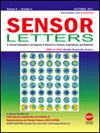Preliminary Development of a Competitive Fluorescent Quantum Dot-Based Immunochromatographic Test Strip for Sensitive Saxitoxin Detection
引用次数: 0
Abstract
Rapid and portable detection of saxitoxin (STX) and its many congeners is highly desirable to prevent paralytic shellfish poisoning due to red tide or harmful algal blooms. In this work, we describe successful preliminary efforts to develop a very sensitive general STX family test strip employing highly fluorescent red quantum dots (Qdot 655) to detect as little as 0.5 to 1 part per billion (ppb or ng/ml) of STX with a dynamic range extending to 20,000 ppb after the prototype dipstick assay was optimized. A competitive format was necessitated by the small molecule nature of STXs having only one epitope, but the decrease in Qdot fluorescence was clearly visible to the naked eye as a function of increasing STX concentration in aqueous buffer. The competitive displacement assay format required conjugation of a primary amine in STX to carboxyl-Qdot 655 via a covalent carbodiimide coupling reaction which was validated by an electrophoretic mobility band shift assay.竞争性荧光量子点免疫层析试纸条对蛤蚌毒素敏感检测的初步研制
快速、便携地检测蛤蚌毒素(STX)及其许多同系物对于预防由赤潮或有害藻华引起的麻痹性贝类中毒是非常必要的。在这项工作中,我们描述了成功的初步努力,开发了一种非常敏感的STX家族测试条,采用高荧光红色量子点(Qdot 655),在原型试纸法优化后,检测STX的动态范围可扩展到20,000 ppb,仅为0.5至1十亿分之一(ppb或ng/ml)。由于STX只有一个表位的小分子性质,需要一种竞争格式,但随着STX水溶液中浓度的增加,Qdot荧光的下降可以用肉眼清楚地看到。竞争位移分析格式需要通过共价碳二亚胺偶联反应将STX中的伯胺偶联到羧基qdot 655上,并通过电泳迁移率带移试验验证。
本文章由计算机程序翻译,如有差异,请以英文原文为准。
求助全文
约1分钟内获得全文
求助全文
来源期刊

Sensor Letters
工程技术-电化学
自引率
0.00%
发文量
0
审稿时长
6 months
期刊介绍:
The growing interest and activity in the field of sensor technologies requires a forum for rapid dissemination of important results: Sensor Letters is that forum. Sensor Letters offers scientists, engineers and medical experts timely, peer-reviewed research on sensor science and technology of the highest quality. Sensor Letters publish original rapid communications, full papers and timely state-of-the-art reviews encompassing the fundamental and applied research on sensor science and technology in all fields of science, engineering, and medicine. Highest priority will be given to short communications reporting important new scientific and technological findings.
 求助内容:
求助内容: 应助结果提醒方式:
应助结果提醒方式:


